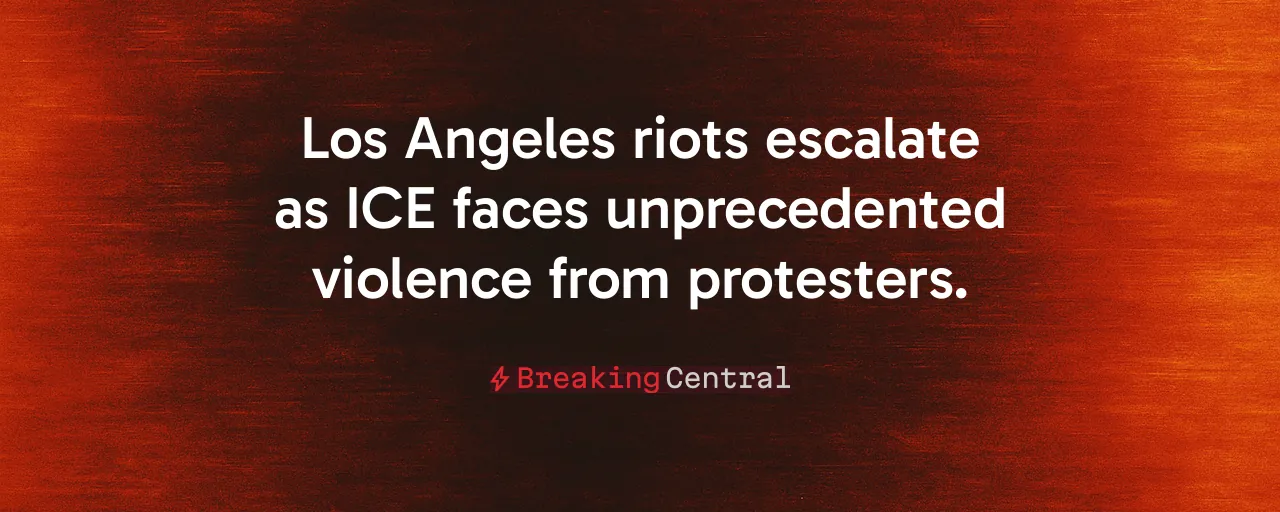A City in Chaos
Los Angeles streets burned with unrest this summer as protests against Immigration and Customs Enforcement turned violent. White House Deputy Chief of Staff Stephen Miller ignited a firestorm, accusing Democratic leaders of fueling an 'insurrectionist movement' against federal agents. His words, aired on Fox News, followed weeks of riots, property damage, and a staggering 400 percent spike in assaults on ICE officers, according to the Department of Homeland Security. The clash has exposed a deeper divide over immigration enforcement and the rule of law.
The spark came from intensified ICE operations targeting illegal immigration. Federal agents, backed by National Guard units, swept through neighborhoods, triggering outrage from local leaders like Mayor Karen Bass. Protesters, ranging from community organizers to armed agitators, clashed with officers, breaching security at a federal building. The chaos disrupted businesses, terrified residents, and left officers battered, revealing a crisis that tests the nation's commitment to order.
Officers on the Front Line
ICE agents now face unprecedented danger. The Department of Homeland Security reports a 413 percent rise in assaults on officers since spring 2024. Video evidence shows rioters surrounding federal facilities, slashing tires, and doxxing agents' families. These incidents form a pattern of hostility. Officers, already stretched thin by high-risk raids, describe plummeting morale. Their union demands stronger protections, arguing that vilifying ICE as 'Gestapo' incites violence.
The stakes extend beyond personal safety. When federal agents are targeted, the authority to enforce immigration law erodes. The Constitution's Supremacy Clause grants the federal government clear power over immigration, yet sanctuary policies in cities like Los Angeles obstruct cooperation. Mayor Bass, for instance, confronted armed agents during a gang sweep in MacArthur Park, demanding their withdrawal. Such defiance forces ICE into riskier operations, escalating tensions and endangering lives.
Sanctuary Policies Fuel Conflict
Sanctuary jurisdictions, championed by California leaders, lie at the heart of this standoff. Laws like SB-54, passed in 2018, limit local police cooperation with ICE, blocking detainer requests for criminal aliens. This forces federal agents into public spaces for arrests, increasing the likelihood of confrontation. Work-site raids, targeting industries like apparel and agriculture, disrupt communities and provoke backlash. The $120 million in damages from L.A.'s unrest, per the city controller, underscores the economic toll.
Historical precedent warns of escalating consequences. The 1996 Illegal Immigration Reform Act set the stage for federal-local tensions, but the 2017 sanctuary-city executive order and 2019 'Abolish ICE' movements deepened the divide. Today's riots echo the 1992 Los Angeles unrest in scale, though driven by immigration policy rather than a policing verdict. The refusal to honor federal warrants risks normalizing defiance of law, undermining national sovereignty.
The Threat of Political Violence
The surge in anti-ICE attacks raises alarms about domestic terrorism. CSIS data shows government-targeted plots have nearly tripled in five years, with left-wing and single-issue extremists increasingly active. Labeling all protesters as terrorists would be reckless, but the tire-slashing, doxxing, and armed standoffs signal a dangerous trend. Normalizing violence against federal agents threatens the stability of law enforcement nationwide, including ICE.
Words matter in this volatile climate. When elected officials decry ICE as oppressive, they risk legitimizing aggression. The rhetoric from Los Angeles leaders, paired with sanctuary laws, creates a permissive environment for chaos. Yet federal tactics, like deploying Marines in urban parks, can inflame tensions. RAND studies suggest militarized policing deters immediate violence but fuels long-term resentment, driving more protests.
Solutions Rooted in Strength
Restoring order calls for bold action. Expanding the legal definition of domestic terrorism to include anti-ICE attacks would deter future violence. Mandatory prison terms for assaulting federal agents signal zero tolerance for threats. Defunding cities that refuse ICE detainers could pressure compliance, ensuring local governments respect federal law. Continued National Guard support for large-scale operations protects officers while maintaining enforcement momentum.
These measures align with a vision of secure borders and sovereign authority. ICE's 2,000 daily arrests nationwide in June and July targeted serious offenders, not random families. Strengthening officer training and intelligence on fringe agitators can prevent peaceful rallies from turning violent. Clear rules of engagement, limiting military optics in cities, balance force with restraint, preserving public trust.
A Path to Stability
The Los Angeles crisis reveals a nation at a crossroads. Protecting federal agents and upholding immigration law are non-negotiable for a functioning society. Yet the unrest signals a need for precision in enforcement to avoid alienating communities. Federal-state task forces, focused on violent felons and backed by real-time data, offer a practical compromise. Codified penalties for attacks on officers, paired with reaffirmed protest rights, can lower the temperature.
The alternative is a spiral of violence and division. Families live in fear, businesses shutter, and officers face daily threats. The Supremacy Clause is paramount, as is the principle of proportional force. Leaders on all sides bear responsibility to reject inflammatory rhetoric and prioritize public safety. The nation watches, waiting for resolve to triumph over chaos.
America's strength lies in its laws and those who enforce them. ICE officers deserve protection, just as communities deserve clarity. By reinforcing federal authority, deterring violence, and fostering cooperation, decisive action will restore order and secure the nation's future.
